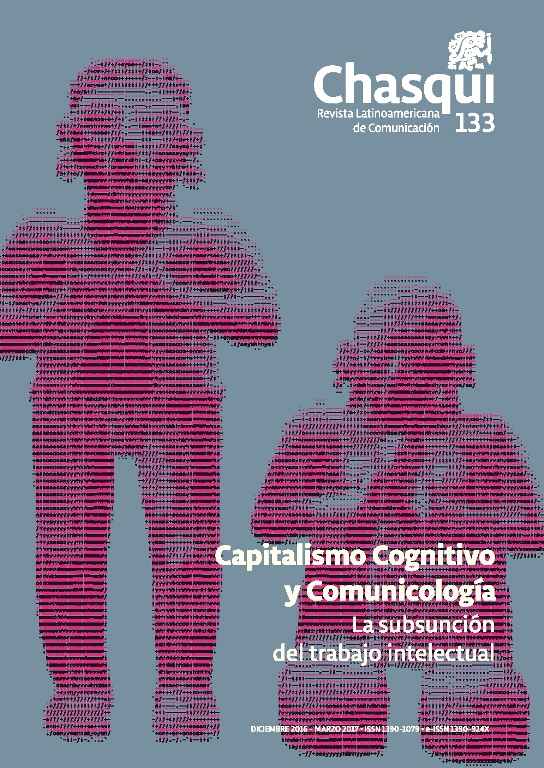Miss Tacuarembó (Martin Sastre, 2010): Baroque thought to question the society that raised us
DOI:
https://doi.org/10.16921/chasqui.v0i133.2481Keywords:
popular culture, mass culture, Latin American cinema, songAbstract
Miss Tacuarembó, an Argentinian-Uruguayian co-production released in 2010, proposes a familiar story for Latin American audiences: a girl from a small town wants to success in the big city. Nevertheless, the baroque mise-en-scène of the film directly points to religious, family and show-business institutions through a camp sensibility, strengthening the ludic aspect of formats that are reworked and from which it is nourished, such as video and reality show. Thus, it builds a spectator that may identify him or herself with the main characters and simultaneously understand the operations and contradictions that constituted them as subjects, undoubtedly implying a political perspective on the notions of consume and popular culture.References
Best, B. (1997). Over the counter-culture. En Redhead, Steve (ed.), The Clubcultures reader. Readings in Popular Culture Studies. London: Blackwell Publishers.
Bajtin, M. (1987). La cultura popular en la Edad Media y el Renacimiento. Madrid: Alianza.
Duarte, M. (2014). ¿Quién necesita cine? Políticas culturales y políticas cinematográficas en el Uruguay (1990-2010). Imagofagia, nº 10.
Echeverría, B. (1996). El ethos barroco. Debate feminista, año 7, vol. 13 [1994, Bolívar Echeverría (comp.). Modernidad, mestizaje cultural, ethos barroco. México: UNAM/El equilibrista].
Hall, S. (1984). Notas sobre la deconstrucción de lo popular. En Samuels, R. (ed.), Historia popular y teoría socialista. Barcelona: Crítica.
Martín-Barbero, J. (2010 [1987]) De los medios a las mediaciones. Comunicación, cultura y hegemonía. México: Anthropos - Universidad Autónoma Metropolitana.
Martín-Barbero, J. (1988). Procesos de comunicación y matrices de cultura. Itinerario para salir de la razón dualista. Barcelona: Gustavo Gili.
Martín-Barbero, J. & Ochoa, A. M. (2001). Políticas de multiculturalidad y desubicaciones de lo popular. En Estudios Latinoamericanos sobre cultura y transformaciones sociales en tiempos de globalización. Buenos Aires: Consejo Latinoamericano de Ciencias Sociales.
Paranaguá, P. A. (2005). Tradición y modernidad en el cine de América Latina. Madrid, México: Fondo de Cultura Económica.
Raimondo, M. (2010). Una historia del cine en Uruguay. Memorias compartidas, Montevideo: Planeta.
Sarduy, S. (1972). El barroco y el neobarroco. En Fernández Moreno, C. (coord.), América Latina en su literatura. México: Siglo XXI.
Sarduy, S. (1974). Barroco. Buenos Aires: Sudamericana.
Downloads
Additional Files
Published
Issue
Section
License
- Authors retain copyright and grant the journal right of first publication with the work simultaneously licensed under a Creative Commons Attribution-NoDerivs License (CC BY-ND) that allows others to share the work with an acknowledgement of the work's authorship and initial publication in this journal.
- Authors are able to enter into separate, additional contractual arrangements for the non-exclusive distribution of the journal's published version of the work (e.g., post it to an institutional repository or publish it in a book), with an acknowledgement of its initial publication in this journal.
- Authors are permitted and encouraged to post their work online.

